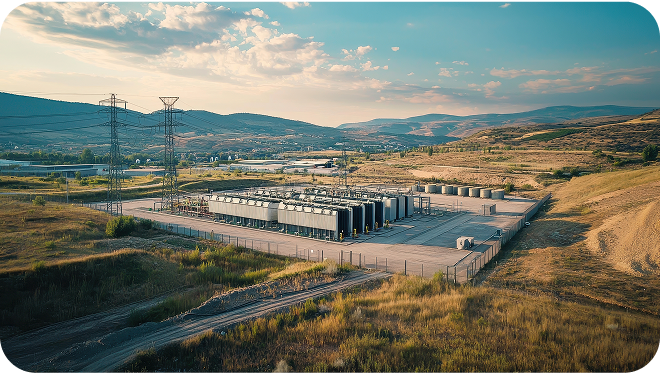
ISB Vault Bridging the energy gap – Maximizing value

We are an energy storage company that develops innovative products and solutions to help providers and customers maximize energy value, eliminate curtailment/waste, and bridge the energy gap through grid deferral.
The Problem
Gridlock:
Energy consumption continues to grow globally, with demand quickly outpacing supply and overstressing power grids.
The Need
Perpetual Power:
Energy providers need long duration storage solutions to bridge renewable power availability, supplement long-term power grid upgrades, and assure non-flammable, non-degradable, long lasting assets.
The solution
VoltStorage:
We create products and technologies to ensure that energy generated is never wasted and is always available when needed - enabling the resilient and green grids of tomorrow.
VoltStorage Iron + Salt Battery Vault
Ultra low-cost and durable battery technology
Based on well known flow battery principles, VoltStorage developed the novel and proprietary ISB technology tailored for the Long-Duration Energy Storage (LDES) segment.
-
Specification
Value *Preliminary Values
-
Rated Power - System
1 MW to 100MW+
-
Rated Capacity - System
8 MWh to 2.4 GWh+
-
Discharge Duration
8-24+ hour discharge
-
Charge to Discharge Power
150%-200%
-
Operating Temperature
-25 C to 50 C
-
Round Trip Efficiency
70%(DC-DC)
-
Depth of Discharge
0-100%
-
Aux Power
5% operation, 2% standby
-
BMS
Modbus TCP/IP
-
Design life
25 Years
Use Cases

Utility & Grid Scale
Wind and PV Firming
Gas Peaker Replacement
Renewable Power Optimization
Peak Demand Coverage
CO2 and Cost Reduction

Commercial & Industrial
Industry & Data Center Supply
Non-Interruptible Manufacturing
Cold Storage Warehousing
Hospitals & Critical Infrastructure
Commercial Center Back-Up Power

Off-Grid & Behind the Meter
Rural & Isolated Communities
Renewable-Powered Microgrids
Oil and Gas Development
Mining & Agricultural Operations
Monetizing Curtailed and Stranded Assets